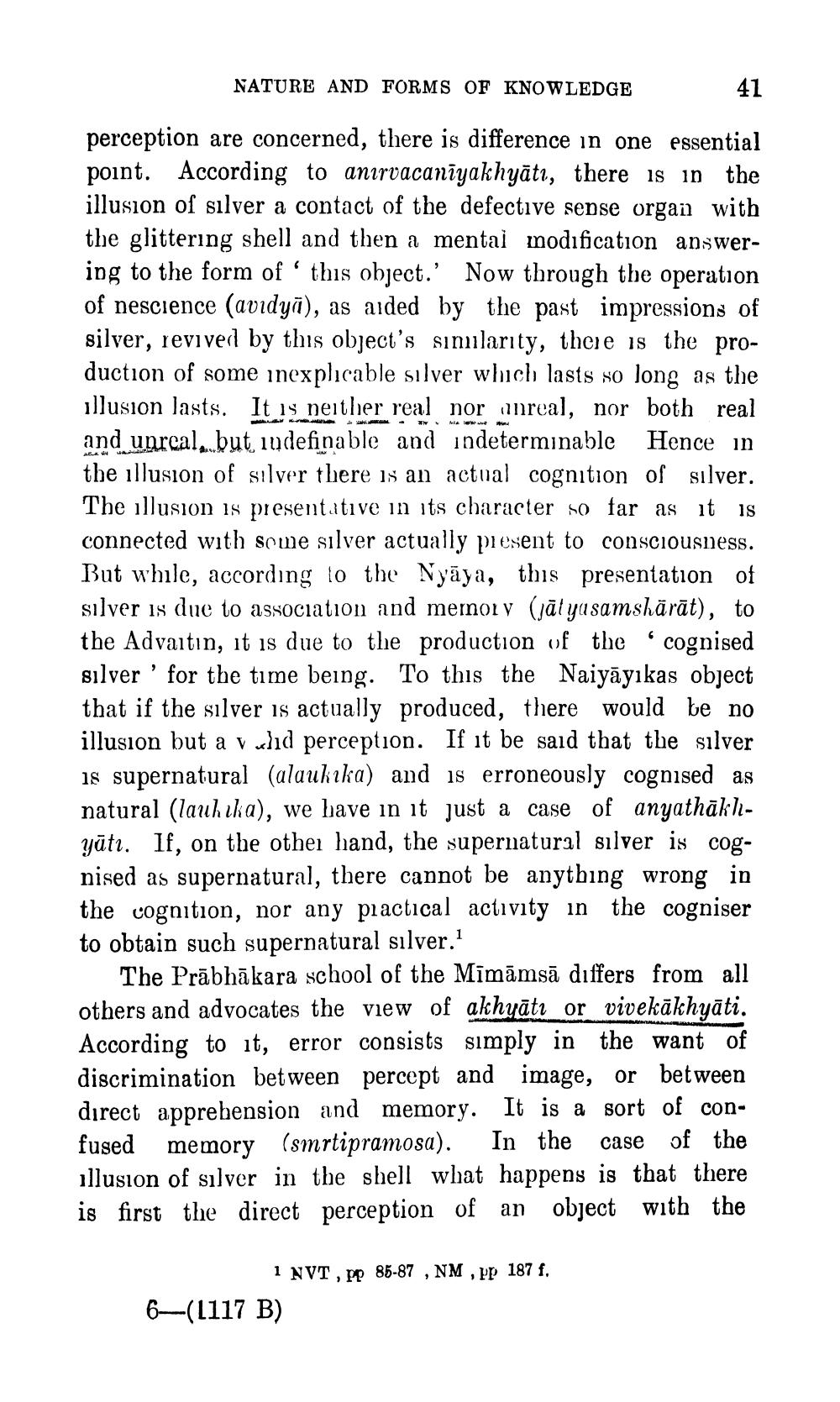________________
NATURE AND FORMS OF KNOWLEDGE
41
perception are concerned, there is difference in one essential point. According to anirvacanīyakhyātı, there is in the illusion of silver a contact of the defective sense organ with the glittering shell and then a mental modification answering to the form of 'this object.' Now through the operation of nescience (avidyā), as aided by the past impressions of silver, revived by this object's simularity, there is the production of some inexplicable silver which lasts so long as the illusion lasts. It is neither real nor anreal, nor both real and unreal.but indefinable and indeterminable Hence in the illusion of silver there is an actual cognition of silver. The illusion is presentative in its character so far as it is connected with some silver actually present to consciousness. But while, according to the Nyāya, this presentation of silver is due to association and memory (jātyusamshärāt), to the Advaitin, it is due to the production of the 'cognised silver 'for the time being. To this the Naiyāyikas object that if the silver is actually produced, there would be no illusion but a valid perception. If it be said that the silver is supernatural (alaukika) and is erroneously cognised as natural (laukika), we have in it just a case of anyathākhyūti. If, on the other hand, the supernatural silver is cognised as supernatural, there cannot be anything wrong in the cognition, nor any practical activity in the cogniser to obtain such supernatural silver.
The Prābhākara school of the Mīmāmsā differs from all others and advocates the view of akhyāti or vivekākhyāti. According to it, error consists simply in the want of discrimination between percept and image, or between direct apprehension and memory. It is a sort of confused memory (smrtipramosa). In the case of the illusion of silver in the shell what happens is that there is first the direct perception of an object with the
1 NVT, pp 85-87 , NM , pp 187 f. 6-(1117 B)




